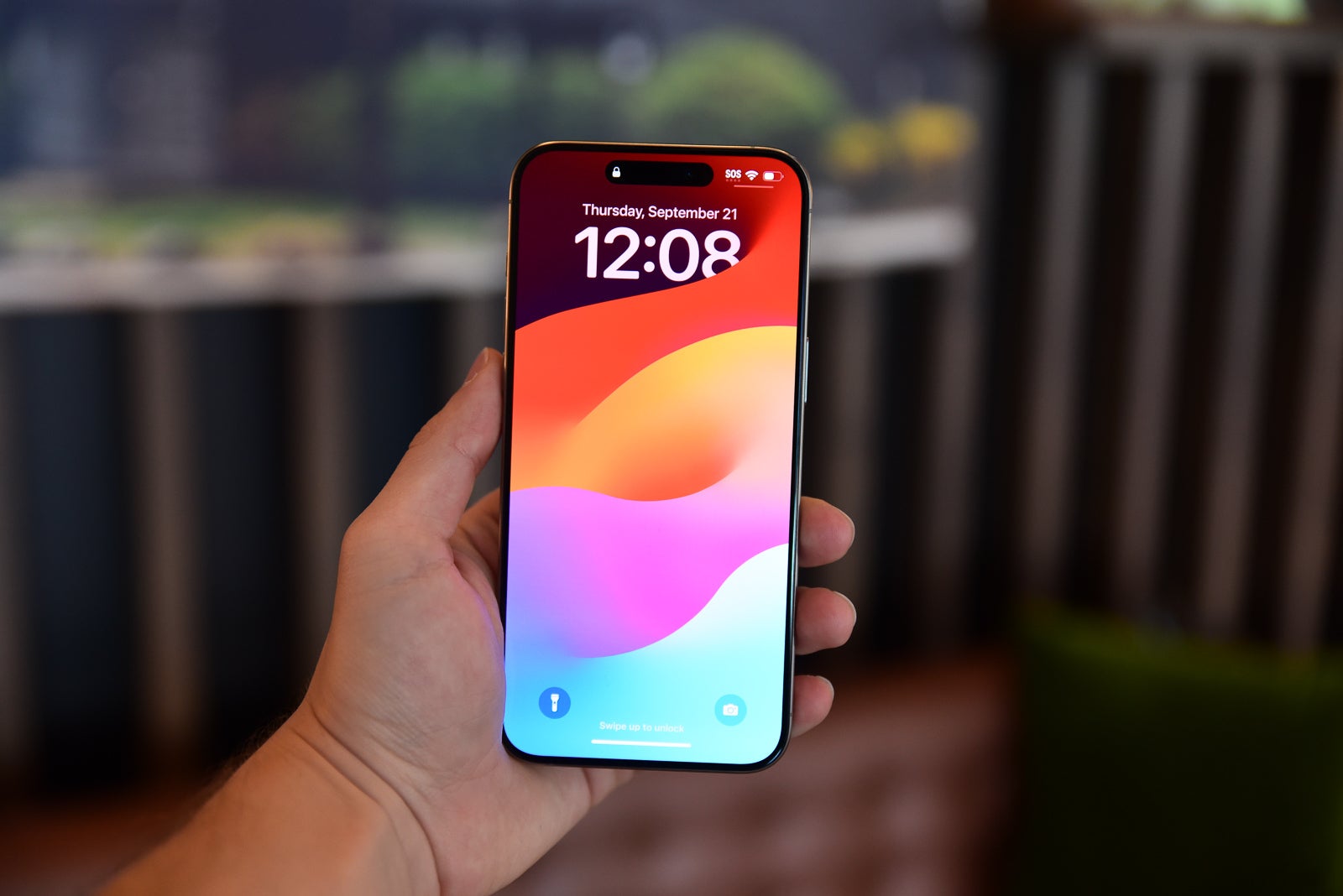Worried about roaming charges on your smartphone? Make your vacation a blast with these tips

Recently, an eyebrow-raising story made the headlines. A T-Mobile customer faced with a $78,000 monthly bill, and nope, that's not actually a story about someone getting scammed. This fee is actually... from roaming charges. And many other people have had similar situations when traveling abroad.
In fact, if you've been like me and considered roaming charges to not be that big of a deal, then this article is for you. Here's how to prevent a jaw-dropping invoice from your carrier after you've traveled.
But before that...
How did they owe $78,000 in charges?!

As I already mentioned, the customer didn't get scammed or anything of that matter. The thing is, many people are unaware of the roaming fees that they may get charged from their carrier for using their phones abroad.
In the case we're discussing, it was T-Mobile charging $15 per MB for data roaming. Yep, that amounts to $15,000 for each GB that your phone uses. Similar situations have happened to users from AT&T and Verizon. So unknowingly, the customer was using roaming and the gigabytes stacked up, accumulating an enormous sum as a bill.
- So, why do roaming charges even exist?
When you connect to a foreign network, in fact, your home network must compensate for the foreign network using its infrastructure. Basically, the cost of doing so gets passed to you in the form of a roaming charge.
- When do roaming charges kick in?
Quickly, let's address what actions roaming charges apply to. All in all, almost all the features you'd want to use on your phone are in that list (well, apart from snapping photos).
- Making or receiving a call: this one is paid for minutes talking
- Sending or receiving text (SMS) message: every single text is paid
- Browsing the internet: paid per MB of data
- Sharing a photo on social media: per MB of data used
- Streaming music or video: per MB of data used (and uses lots of it!)
- Checking social media: per MB of data used
How to prevent enormous roaming charges

Roaming can be expensive, and as you can see with the recent situation that occurred, it can get very, very expensive. And in fact, the carrier isn't responsible for eliminating this charge from your account. The carrier might choose to help you, but the thing is, those conditions are listed on each carrier's website and it's very difficult to argue that you don't have to pay the bill.
Now, let's explore common strategies to avoid getting spanked with a bill like that!
Before you go on a vacation or business trip
Here are the steps to take before you even go outside the U.S. or your own country.
- Check roaming rates
Ensure that you know the rates that your carrier charges for roaming - including voice tariffs (for when you make or take calls), messages (SMS) tariffs, and data tariffs. Check with your respective carrier for a specific country (a network provider may not support roaming in every country).
Rates for roaming:
- Data roaming spend caps
You can also configure a cap for data roaming with your carrier. Contact your respective carrier for assistance on how to do that. Basically what it does is set a cap of a selected sum of money and if you go over it, your network will stop your data usage.
- Make sure you're not enrolled in a carrier travel plan from a previous trip
Ensure you are not enrolled in any carrier travel plans that you may have forgotten about (believe it or not, this might happen). It may charge you even if you don't use any data roaming. To ensure this, contact your carrier.
The carrier can also offer you a travel plan. Consider what they offer and your options to make a decision.
Already on a trip? Here's what you can do to lower roaming fees

Here's what you can do to avoid a big bill with roaming charges when you travel. You have two options - you can lower roaming fees, or you can try to avoid them altogether. Here's what to do in both scenarios.
- Use W-Fi as much as possible
Limit the use of data and use Wi-Fi when available. For example, many hotels offer free Wi-Fi to guests. When out, avoid using data.
NB! Connecting to a public Wi-Fi network could be very risky. Hackers may want to steal your personal information if you're not protected when connected to public Wi-Fi. Use a VPN service so you can protect your identity and browsing information from public Wi-Fi networks. You can also download an antimalware or an antivirus app and get into the habit of using it every time after you've been on a public Wi-Fi network.
Also, you can ask locals if the Wi-Fi, let's say, in a restaurant, is okay to use. Most people are open to the truth even if they work there.
- Monitor your data spending/internet time
You're in control of the time you spend on the internet. Monitor it so you can lower roaming charges. For example, only surf the web for essential things and avoid checking Instagram, streaming on Spotify, or watching YouTube videos.
Monitor and limit your data:
For iOS:
- Go to Settings
- Tap on Mobile Service (or Mobile Data, or Cellular)
- Scroll down to Mobile Data and check "Current period roaming". There you see how much GB you've used. Scrolling all the way down shows you what the period is, and you can tap on "Reset statistics" to clean all these numbers for accurate monitoring.
iOS doesn't exactly offer data warnings for when you've used too much data. Apps like My Data Manager can help you set alerts for data usage.
For Android:
- Go to Settings
- Tap on Network & Internet
- Tap on SIMs to check your data usage.
To set an alert for data usage:
- Go to Settings once again
- Tap on Network & Internet
- Tap on your primary SIM
- Scroll down to Data warning & limit
- Tap on Mobile Data Usage cycle. There you can select the date of each month to reset the cycle, then set a data warning and enable the 'Set data limit' toggle.
Make sure to set a conservative data limit as it may not entirely match what your carrier will measure!
- Use messaging apps via the internet (on Wi-Fi)
Stick to messaging apps such as WhatsApp, Telegram, or Facebook Messenger to make calls and texts. Of course, for this method to help you save money, you should be using it with a Wi-Fi connection. Otherwise, you'll be charged a data roaming fee for the MB of data you use with those apps.
- Stop background apps and switch off automatic downloads
Some apps use data in the background. To prevent this, you can disable this background activity which will help cut data.
To do that on iOS:
- Go to Settings
- Tap on Cellular/Mobile Service
- Ta on Cellular/Mobile Data
- Scroll down and toggle off any apps you don't want to use cellular data. Once you're home again, you can turn them back on.
To do it on Android:
- Go to Settings
- Tap on Data Usage
- Find the App Data Usage section. Toggle off background data for your apps.
- Rent a Wi-Fi hotspot - a portable one
You can rent a portable Wi-Fi hotspot from the country you are in. These devices are usually called Mi-Fi devices. You can buy this from the airport where network carriers have sales centers. These do come with a daily fee for renting, but it's usually affordable.
How to lower roaming fees down to a minimum

- Airplane mode
This mode disables network/data and allows you only to connect to Wi-Fi.
- Disable data roaming
You can choose to not roam on data altogether. With this setting, you cannot access the internet on mobile data while you're abroad, so no data roaming charges can be applied. You can surf only on Wi-Fi.
Disable data roaming on iOS:
- Go to Settings
- Tap on Cellular/Mobile Service
- Tap on Cellular Data/Mobile Data Options
- Find Data Roaming and toggle it off.
Disable data roaming on Android:
- Go to Settings
- Tap on Network & Internet
- Tap on Mobile Network
- Find Data Roaming and disable it.
- Use a temporary SIM Card
You can buy a temporary SIM card from the country you're visiting. Many countries offer temporary SIM cards for tourists and short-term visitors. You can then use the card for calls, SMS, and browsing.
- Use a virtual phone number
A virtual phone number is linked to an online account and is usually programmed to forward incoming calls to another number. You can buy one for the country you're visiting and link it to your number. When someone calls you, they'll be redirected to the virtual phone number.
- If you have an eSIM, simply subscribe to the local carrier
eSIM allows you to subscribe to multiple networks and you don't have to swap SIM cards whenever you change the network. This can help you easily switch to a local network and go back to your normal network when you leave the country you're visiting.
All in all, as you can see you have loads of options to prevent a similar situation like the one that sparked this article happening to you. Remember to be vigilant and happy travels!














Things that are NOT allowed:
To help keep our community safe and free from spam, we apply temporary limits to newly created accounts: